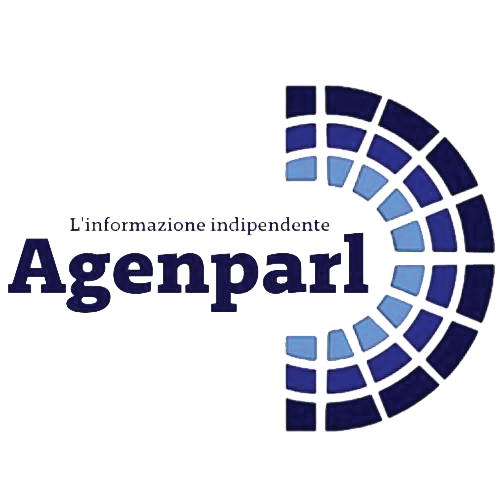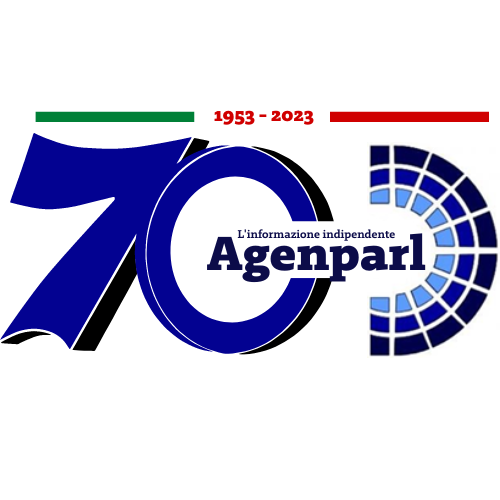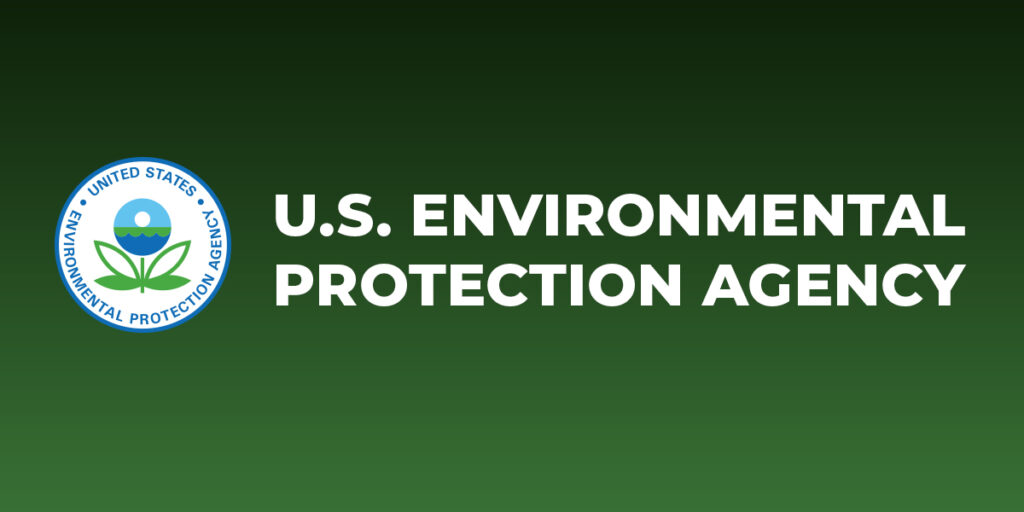 (AGENPARL) - Roma, 7 Febbraio 2024
(AGENPARL) - Roma, 7 Febbraio 2024(AGENPARL) – mer 07 febbraio 2024 Issued: Feb 7, 2024 (10:00am EST)
If you wish to unsubscribe please do so
here: http://url6130.epa.mediaroom.com/ls/click?upn=-2BroytcZInNRyuFbAvAoN5aMEQDHIx2RtQl0jT-2FwLgZHafJKm-2F7NYrsKNAZH88rhd98aG2o5sSGIX8iVgGgXwOczi8WNFU0a7GLvUAvQ8R0RGX5bAZ9mjh1NYnKAGekGpcba-_mLoYh0p4AWg4foFr5HgrZ1QioQ33bLwdnQ-2BsYGKFX9mApcfdQmv0-2Bvkdf9kq-2BlYjMtqnnquRDo4yN4sp-2BZWthlY9IQykHW18Mftfq-2F5oMj8vgTiyjpmpYogR8ltvy-2FdKmV9h4yJ609Fa-2FyM48OWJZWuqd8BeTgrZRMQLfCcFfD1puJHupEfdoYPnIJ6mJkbP54tnZeoqlBgh6nW2llKFCK5aIEkRQsOgKnbSjAZM3RFjZGsciYD9taI0FgiWCl7K
EPA finalizes stronger standards for harmful soot pollution, significantly
increasing health and clean air protections for families, workers, and
communities
Stronger standard will yield up to $46B in net health benefits, save lives,
and build healthier communities, while supporting economic growth across
America
U.S. Environmental Protection Agency, Region 7 – 11201 Renner Blvd., Lenexa,
KS 66219
Iowa, Kansas, Missouri, Nebraska, and Nine Tribal Nations
LENEXA, KAN. (FEB. 7, 2024) – The Biden-Harris Administration on Wednesday
finalized a significantly stronger air quality standard that will better
protect America’s families, workers, and communities from the dangerous and
costly health effects of fine particle pollution, also known as soot. By
strengthening the annual health-based national ambient air quality standard
for fine particulate matter (PM2.5) from a level of 12 micrograms per cubic
meter to 9 micrograms per cubic meter, the U.S. Environmental Protection
Agency’s updated standard will save lives — preventing up to 4,500
premature deaths and 290,000 lost workdays, yielding up to $46 billion in net
health benefits in 2032. For every $1 spent from this action, there could be
as much as $77 in human health benefits in 2032.
Today’s action is based on the best available science, as required by the
Clean Air Act, and sets an air quality level that EPA will help states and
Tribal Nations achieve over the coming years — including through
complementary EPA standards to reduce pollution from power plants, vehicles,
and industrial facilities, paired with historic investments under President
Biden’s Inflation Reduction Act and the Bipartisan Infrastructure Law. These
actions bolster the U.S. economy by deploying billions of dollars and creating
good-paying jobs across the transition to cleaner technologies. This strategy
will make Americans healthier and more productive, while underpinning a
manufacturing resurgence in America. Since 2000, PM2.5 concentrations in the
outdoor air have decreased by 42% while the U.S. Gross Domestic Product
increased by 52% during that time.
“This final air quality standard will save lives and make all people
healthier, especially within America’s most vulnerable and overburdened
communities,” said EPA Administrator Michael S. Regan. “Cleaner air means
that our children have brighter futures, and people can live more productive
and active lives, improving our ability to grow and develop as a nation. EPA
looks forward to continuing our decades of success in working with states,
counties, Tribes, and industry to ensure this critical health standard is
implemented effectively to improve the long-term health and productivity of
our nation.”
Along with strengthening the primary annual PM2.5 standard, EPA is modifying
the PM2.5 monitoring network design criteria to include a factor that accounts
for proximity of populations at increased risk of PM2.5-related health effects
to sources of air pollution. This will advance environmental justice by
ensuring localized data collection in overburdened areas to inform future
NAAQS reviews.
Particle pollution is of great concern to those with heart or lung disease and
other vulnerable communities, including children, older adults, and people
with health conditions like asthma, as well as already overburdened
communities, including many communities of color and low-income communities
throughout the United States. Strengthening the Clean Air Act standard for
fine particle pollution improves air quality nationally for everyone, ensuring
that communities that are overburdened by pollution are not left behind.
“The Biden administration is taking life-saving action to protect people and
rein in deadly pollution,” said Abigail Dillen, President of Earthjustice.
“The science is crystal clear. Soot, otherwise known as fine particle
pollution, is a killer. It is driving heart disease, our asthma epidemic, and
other serious illnesses. The people who suffer most are children and older
Americans who live in communities of color and low-income communities. This
federal standard will ensure that states respond to the ongoing public health
and environmental justice crisis, saving thousands of lives and avoiding
800,000 asthma symptom cases every year.”
“Administrator Regan and President Biden deserve thanks for taking this
vital step to curb soot pollution – a dangerous and even deadly pollutant that
has taken an oversized toll on underrepresented and overburdened communities
less equipped to deal with its severe health impacts,” said Dr. Doris
Browne, 118th President of the National Medical Association. “This new
standard of 9 micrograms per cubic meter will save lives based on scientific
evidence. That is the bottom line. And as a physician, an advocate for clean
air, and the past president of the National Medical Association representing
physicians, our ultimate goal is health equity.”
“President Biden and EPA Administrator Regan’s new soot pollution limits
will save thousands of lives and slash air pollution for people across the
country, especially those disproportionately impacted by deadly particle
pollution,” said Margie Alt, Director of the Climate Action Campaign.
“This standard makes meaningful progress toward protecting our health and
addressing the administration’s environmental justice commitments.”
“Particle pollution is a killer. In the United States alone, it cuts
thousands of lives short, taking a staggering toll. Children’s bodies are
uniquely vulnerable to the harms of soot pollution,” said Dominique
Browning, Director and Co-Founder of Mom’s Clean Air Force. “Moms Clean
Air Force commends EPA for taking a significant step forward in strengthening
the annual standard for particle pollution, also known as soot, to 9
micrograms per cubic meter from its current level at 12. EPA’s new national
health standard for particle pollution is the first improvement in over a
decade. Soot is associated with increased infant mortality, hospital
admissions for heart and lung diseases, cancer, and increased asthma severity.
EPA’s finalized protection is an important step towards cleaner, healthier
air for all children.”
In June 2021, EPA announced it would reconsider the December 2020 decision to
retain the 2012 standards because the available scientific evidence and
technical information indicated that the standards may not be adequate to
protect public health and welfare. EPA considered the available science and
technical information, as well as the recommendations of the independent
advisors comprising the Clean Air Scientific Advisory Committee and CASAC PM
expert panel when making the decision on whether to strengthen the PM
standards.
Based on the scientific evidence, technical information, recommendations from
CASAC, and public comments on the 2023 proposed standards, EPA has set two
primary standards for PM2.5, which work together to protect public health: the
annual standard, which EPA has revised, and a 24-hour standard, which the
agency retained. EPA also retained the current primary 24-hour standard for
PM10, which provides protection against coarse particles. EPA is also not
changing the secondary (welfare-based) standards for fine particles and coarse
particles at this time.
A broad and growing body of science links particle pollution to a range of
serious and sometimes deadly illnesses. Many studies show that these
microscopic fine particles can penetrate deep into the lungs and that long-
and short-term exposure can lead to asthma attacks, missed days of school or
work, heart attacks, expensive emergency room visits and premature death.
Due to the efforts that states, Tribes, industry, communities, and EPA have
already taken to reduce dangerous pollution in communities across the country,
99% of U.S. counties are projected to meet the more protective standard in
2032, likely the earliest year that states would need to meet the revised
standard. That’s even before accounting for additional actions on the
horizon to implement the Bipartisan Infrastructure Law and Inflation Reduction
Act investments and to update source-specific emission standards.
See projected progress in 2032.
EPA is also revising the Air Quality Index to improve public communications
about the health risks from PM2.5 exposures.
Some PM is emitted directly from combustion sources, construction sites,
industrial processes, and older diesel engines, while other particles are
formed in the atmosphere in complex chemical reactions with other pollutants
such as sulfur dioxide and nitrogen oxides that are emitted from power plants,
gasoline and diesel engines, and certain industrial processes. Particle
pollution from industrial processes and other sources is controllable, with
readily available and cost-effective technologies to manage emissions, and EPA
will build on decades of experience in providing flexible options to states
and Tribes across the implementation process.
EPA carefully considered extensive public input as it determined the final
standards. The agency held a virtual public hearing and received about 700,000
written comments before finalizing today’s updated air quality standards.
See more information on today’s final standards at Final Reconsideration of
the National Ambient Air Quality Standards for Particulate Matter.
# # #
Learn more about EPA Region 7
To unsubscribe or change your settings click here:
http://url6130.epa.mediaroom.com/ls/click?upn=-2BroytcZInNRyuFbAvAoN5aMEQDHIx2RtQl0jT-2FwLgZFdW2WYdzQmaasDKJ3YChU35ihgp7VkMOClgQO-2FJf30Uoo-2BkkMmLOPxi01rZPwtwj2fIZq5HVO8d5SwtqyNoB5LJR9BDa8kKemwgNNR1bU-2Fcw-3D-3DrbHa_mLoYh0p4AWg4foFr5HgrZ1QioQ33bLwdnQ-2BsYGKFX9mApcfdQmv0-2Bvkdf9kq-2BlYjMtqnnquRDo4yN4sp-2BZWthlY9IQykHW18Mftfq-2F5oMj-2FhMyIBXVF1Y69DNJSS4nhPCfNPXMac-2F3Z2bVObel0MqB4wE3G3xDBw9uqG0rwyZE5saZIMq8GSynu-2BRDJ1U6MaDD916nc-2FYixJvdjWNaxCT6-2BfoGSHv2vTWIkuRgWDVnmFzBIZ1WMsd2CALYgosXWH

